| 208 history
this is how it's been done |
|
|
|
| ©
words and pictures:
taken
from the magazine 'Radio Luxembourg 208 - 50 pop years' published in 1979
by IPC Magazines Ltd., London
|
| |
| As faithfull
followers of Radio Luxembourg will know, tuning in to 208 each evening
means guaranteed, up-to-date sounds throughout the night. But what a lot
of listeners don't realise, is how much each programme relies on
precision planning and behind-the-scenes work that goes on before each
programme can be 'aired'. |
| Lyndon
Holloway joined the English Service, based in the Grand Dutchy as director
of administration. He is also responsible for co-ordinating advertising,
programming and promotions between the two headquarters and it is largely
his responsibility to make sure that the DJs have the right material with
which to work. |
| The weekly
'playlist' provides the basic music content from which the DJs make up
their programmes. It is essential that this 'list' reflects the current
popular sounds as well as the 'hits' of tomorrow. Its correct compilation
is absolutely vital. |
| |
| It is programme
director Tony Prince, who has applied his years of experience as a DJ to
selecting the weekly playlist. Tony is visited daily by a constant stream
of 'pluggers' all anxious to get their records 'on air'. |
| Together
with the latest singles and albums (including chart bound sounds), the
playlist itself is sent from Hertford Street in London to arrive at the
Villa Louvigny in Luxembourg no later than Thursday. This is the most important
package that the English Service receives as it determines each show's
format. |
|
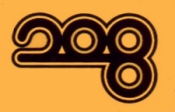
|
| |
|
|
| As records
are opened, they given a library number and are carefully filed away so
that they are available at a moment's notice. Singles that are currently
on the playlist and in use (in fact most of the stations output) are kept
on a designated shelf in the office for all the DJs to use. |
| |
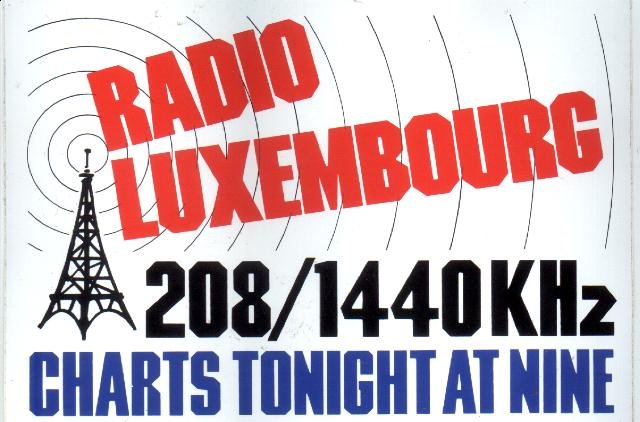
|
| The new
weekly playlist comes into effect each sunday night after Tony's show.
The records are put into a box which the DJs then take into the studio
to select their choice from the three different categories, A, B, and C. |
| It is these
list that enable Radio Luxembourg to play a wide range of sounds, but also
allows the DJs a certain amount of personal freedom, and this is very much
reflected in the final programme that is heard 'on air'. |
| Taking
a show from the beginning, the first record played after the top-of-the-hour
news is the Power-Play. This is a new record selected for extra air time
throughout the week and is considered a definite chart bound sound. |
|
| |
|
|
| From the
playlist each individual DJ then selects a record from the A category,
which is tipped to be a Top Ten number. Next will be a 'Star' sound from
the B category followed by a C category record which is probably a new
release, and the whole cycle is then repeated during the programme. |
| Other shows
rely entirely on the week's charts. They are telexed from London as they
are compiled and are made up from the Top Thirty. The range is vast and
includes disco, rock and popular chart toppers, each with a different set
of records and all these have to be instantly available. |
| Of course
a national radio station also relies heavily on up to the minute news and
this is supplied by telex from the London office. Sometimes the DJs have
only a few minutes to read through the items, but this 'rehearsal', no
matter how short, is vital so that all goes smoothly. |
| |
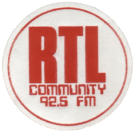
|
| There is
one outstanding difference between the English Service and the RTL-Community
Service (see history: 'the eginning'). |
| |
| Not only
do the DJs use two completely different studios - it also means that on
Community Radio they have to rely very much on their engineers who are
'cued' for the records, whereas at night the DJs are left very much on
their own, and are responsible for all the jingles, commercials and records
being broadcast. |
|
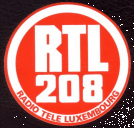
|
| |
|
|
|
| Although
six DJs from the English Service are resident in the Grand Dutchy, there
are weekly recorded programmes sent from Johnnie Walker and Rosko, both
in Amerca, and Tony Prince in London. These shows have to include timed
'blanks' to enable the engineers to drop in the right commercials. |
| It is essential
that these shows not sound recorded and these 'natural' breaks for commercials
are timed to a two seconds allowance, which accommodates the varying length
of jingles. |
| The Sales
Department in Dean Street, also plays an important part in the day to day
running of the English Service. Most of the commercials are sent over to
the DJs on tapes, and they are then transferred onto cartridge, cross referenced
in alphabetical order and allocated a slot in the studio, ready for transmission. |
| |
| The programme
is now complete, and machinery takes over. From the soundproofed studio,
the programme is relayed to the master control room, which is housed in
the same building, one floor up. Engineers are on duty 24 hours a day to
make surethat there are no technical hitches - they also make sure that
all programmes are recorded on tape and filed away for future reference. |
| The programme
is then relayed to the transmitter in the north of the country and then
onto Britain. |
| It's amazing
to think that after travelling so many hundreds of miles across land and
sea, that the English Service is still the only fully national commercial
pop radio station with a powerful enough signal to reach even the most
northern parts of Scotland. |
|
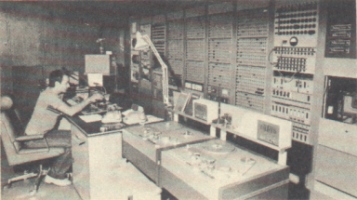
|
| |
|
|
|
|
| ©
words and pictures:
taken
from the magazine 'Radio Luxembourg 208 - 50 pop years' published in 1979
by IPC Magazines Ltd., London
|
| |
|
|
| |
